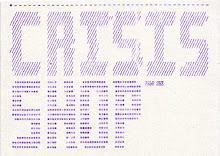The Myth of Progress in Design
“History is not an ascending spiral of human advance, or even an inch-by-inch crawl to a better world. It is an unending cycle in which changing knowledge interacts with unchanging human needs.” Pg3, Heresies, John Gray
“The core idea of progress is the belief that human life becomes better with the growth of knowledge. The error is not in thinking that human life can improve. Rather, it is imagining that improvement can ever be cumulative. Unlike science, ethics and politics are not activities in which what is learnt in one generation can be passed on to an indefinite number of future generations. Like the arts, they are practical skills and they are easily lost.” Pg4, Heresies, John Gray
Unlike the pragmatism and logic of Science and Mathematics, the act of ‘design’ does not have a certain outcome or a carefully predicted incarnation. It is a profession tempered from uncertainty and perpetual failure. It is one of the few professions were successive failure is seen as a positive outcome. It is our responsibility to fail so that the relationship between factual knowledge and human hubris does not spell catastrophe for civilisation in a broader context.
Designers deal with fictitious ‘deadlines’ so that physical, moral and political dead-lines in the real world are not crossed uneducated and ill informed.
Designers exist solely via the simple structure of crisis in which solutions, manipulations and incarnations counterbalance perpetual problems, challenges and obstacles.
We are the mediators of fact that regurgitate inarticulate laboratory knowledge into legible three-dimensional translations.
The majority of ‘designers’ are not inventors or innovators, they are alchemists, perpetually searching for a means to create gold from the bare bones of science. Designers appropriate scientific fact and mediate this immaterial knowledge in such a way as it can perform a practical function to both the ‘user’ and big business.
We represent the lens of elucidation through which science and technology are simultaneously projected back onto the human body.
Contemporary design inhabits a fascinating realm of duality; representing the best human endeavour and the worst human folly. Too often design conflicts with the teachings of science, which dictate the finite parameters of our future as a species. It could be argued that design perpetuates an industry only for itself, producing irresponsible products for conspicuous consumption that actively block and contradict the learned progress of scientific thought.
Successful design of the future must lift the veil of mystery from the science and technology that represents a very real and surging progress in today’s society. Design has a moral responsibility to translate their respective benefits into functional applications that can personify the real progress of our species.
The problem we face in design is the crisis of uniting the polar and fractured endeavours of science and socio-political life. Design must bridge the gap between the marching advance of factual understanding and the tidal, uncertain nature of human behaviour and interaction.
It is up to design to produce the framework across which the opposing spectra of scientific knowledge and human understanding can gel. In this sense, the moral responsibility of design since the industrial revolution, has increased ten fold. Where science increasingly tackles the nano scale we must also consider the macro social picture, without prejudice. Design is required to traverse and bridge the physical void between the tipping scales of awareness, perception and understanding.



No comments:
Post a Comment